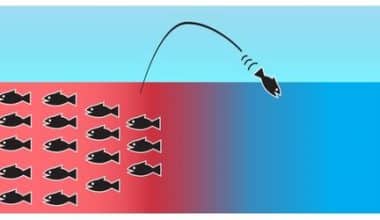A company known as a “channel partner” collaborates with another organization to market or sell their services, goods, or technologies. Examples of such companies include resellers, service providers, vendors, retailers, and agents. In today’s cutthroat business environment, effective channel partner management is crucial for organizations looking to increase their market penetration and revenue. Managed IT services are provided to businesses by a particular kind of service provider called a channel partner program. MSP, or managed service provider, is another term for a channel partner. Channel Partners in Las Vegas draws a crowd from the technology services sector.
In this article, we define channel partner programs, discuss their various types, and outline the advantages they can offer. Furthermore, provide a step-by-step manual for developing a program that produces the best return on investment.
Channel Partner
A company that partners with another company to sell its goods or services instead of doing business directly with customers is known as a “channel partner.” Thus, companies that aid in the marketing, sales, and distribution of a company’s goods or services are referred to as channel partners. Channel partners include companies that integrate systems, deliver services, sell products as resellers or distributors, and operate independently from software developers (ISVs). The channel partner, who sells the goods and services on behalf of the vendor but is a separate business, is a member of the latter’s indirect sales force. They could market both their creations as well as goods and services made by other suppliers.
Channel partners frequently have established customer relationships that a company may not have, and they can offer insightful information about regional market trends. A company’s efforts to expand its clientele into new markets and clientele segments can benefit from the assistance of channel partners.
How Channel Partnerships Work
There are three basic types of relationships in channel partnerships, though they can take many different forms:
#1. Reseller
A reseller is a business that buys goods or services from another firm and resells them to its clients. A company that offers your goods or services for sale is known as a reseller. The indirect sales you generate from this kind of partnership can be higher, and you will not have to spend as much money on marketing. Reputable vendors make it simple for you to use their products and services when you enter into a reseller partnership with them. instead of spending the money, time, and resources necessary to create your software solution.
#2. Distributor
A distributor is a business that buys goods or services from a vendor and then resells them to other businesses. Through this kind of collaboration, the distributor’s distribution networks and expertise are opened up to the supplier, who can now reach a larger audience. Companies known as distributors are those that buy goods or services from suppliers and then pass them along to other retailers or resellers.
#3. Systems Integrator
A systems integrator is a company that specializes in developing and deploying complex technological solutions. A company can frequently benefit from channel partners’ long-standing customer relationships and insightful knowledge of regional market trends. Businesses with a focus on integrating various goods and services into a single solution are known as system integrators. Through this kind of collaboration, the supplier can access the system integrator’s knowledge and services while also reaching a larger audience.
#4. Affiliate
An affiliate is a company that has a following from a target market to which you would like to gain access. A channel partnership gives you access by having the affiliate advertise your brand. The main advantage of affiliate partnerships is their ability to sell your product to customers you would not have otherwise been able to reach, have a very wide audience, and generate a lot of leads for you.
#5. Referrer
An audience hears about your brand from a referrer or referral partner. The referrer may get paid in the form of a percentage or other incentives if their recommendation leads to a conversion. The best thing about referrals is that customers are more likely to value and purchase the product after hearing a partner’s recommendation.
In essence, this partnership enables businesses to take advantage of the partner’s current customer base, an audience they might not otherwise be able to reach.
Benefits of Channel Partnerships
#1. Increased Reach
You can broaden your customer base and enter new markets with the aid of channel partners. Additionally, channel partners can aid companies in entering various vertical and horizontal markets. This is particularly valid for business partners who interact with clientele from diverse geographies or demographic groups.
#2. Revenue
Programs for channel partners can help both parties reach a wider audience of customers and increase their revenue by a sizeable margin as a result of a broader market presence and elevated brand recognition. This growth can be cultivated by partners in a short amount of time.
#3. Enhanced Competence
Knowledge of local markets, assistance with sales and marketing, and technical support are just a few of the valuable resources and skills that channel partners can offer. Partners in the channel frequently have expertise and experience in a specific market or sector. As a result, the original business may be better able to comprehend the needs and preferences of its clients and create goods and services that cater to those needs.
#4. Offering More Sales and Support
By offering more sales and customer support, channel partners can aid the primary business in growing its revenue. This can involve giving tutorials and technical support, as well as responding to customer questions and grievances.
#5. Competitive Advantage
To stand out from the competition and gain a competitive edge, businesses can benefit from partnerships. Building solid and enduring partnerships will help businesses lay the groundwork for long-term success and growth.
Targeting new market segments, increasing market share, and ensuring customer satisfaction are all facilitated by the use of partner channel programs. Partners in the channel serve as tools for generating leads that boost channel sales and boost revenue.
#6. Brand Awareness
By collaborating on marketing campaigns and receiving third-party endorsements, channel partner programs can aid businesses in building their brands. Partners may have a more in-depth knowledge of how to build a following for your brand, which will enable them to help you refine your tactics for long-term success.
#7. Greater Customer Loyalty
Due to the higher caliber of service and support they offer, channel partners frequently forge close bonds with their clients. This may increase client loyalty, which is necessary for ongoing success.
Types of Channel Partnerships
#1. Channel Value-Added Resellers (VARs)
The companies known as channel VARs are those that buy goods or services from businesses and then resell them to their clients. By incorporating the goods or services they resell into more comprehensive solutions that they offer to their clients, channel VARs increase the value of the goods or services they resell.
#2. Service Delivery Partners (SDPs)
Partners in service delivery are businesses that give clients expert assistance in using and implementing the goods and services they have purchased. SDPs frequently have long-standing relationships with their clients and can offer insightful information about regional market trends.
#3. Technology Alliance Partners (TAPs)
Partners in a technology alliance are businesses that have joined forces with a company to jointly promote and offer its goods and services to the public. TAPs frequently have complementary goods and services and a similar clientele.
#4. High-Velocity Partners (aka Fulfillment)
Organizations with the infrastructure and knowledge required to quickly complete sizable orders for a company’s goods or services are known as high-velocity partners. High-Velocity Partners typically have long-standing business relationships with clients and can offer insightful analysis of regional market trends.
#5. Managed Service Providers (MSPs)
Companies that offer managed services—usually IT-related services—to their clients are known as managed service providers. MSPs frequently have long-standing connections with their clients and can offer insightful information about regional market trends.
#6. Global Systems Integrators (GSIs)
Organizations that are experts in developing and putting into use sophisticated technology solutions are known as global systems integrators. GSIs frequently have long-standing business relationships with clients and can offer insightful information about regional market trends.
#7. Embedded Partners (often referred to as “white label” partners)
Partners who have integrated a company’s goods into their own are known as embedded partners. Embedded partners frequently have long-standing connections with clients and can offer insightful information about regional market trends.
#8. Original Equipment Manufacturer (OEM)
OEMs are companies that produce goods that incorporate the goods or services of other businesses. OEMs frequently have long-standing connections with their clients, and they can offer useful information about regional market trends.
#9. Strategic Partners
Organizations that a business has partnered with strategically are known as strategic partners. Partners in a strategic alliance typically have complementary lines of business and a similar clientele.
Risks of Channel Partnerships
Additionally, channel partnerships come with some risks, such as
#1. Loss of Control
When you collaborate with another company, you give up some control over how your goods and services are advertised and sold. The reputation of your company must be safeguarded at all costs. When using channel sales and partnerships with other businesses, you will not have the same control over customer interactions as you do when using your sales team directly.
#2. Channel Conflict
When your direct sales team competes with your channel partners for clients, there may be a channel conflict. When your channel partners vie with one another for clients, channel conflict may also result. Relationships between channel partners may suffer as a result of conflicts. Competing partners, as well as direct sales teams and their partners, frequently argue over poached deals.
#3. Dependence on Partners
Partner dependence may result from channel partnerships. You might lose some of your clients if one of your partners closes the shop. This becomes a big disadvantage to the business. Also, If your partners can offer discounts on your goods or services, channel partnerships may result in margin erosion.
Channel Partner Program
A business initiative known as a channel partner program involves a company forming a partnership with a third party to increase the reach, effectiveness, and value of both organizations. The channel partner program may take several different forms, depending on the business’s particular industry, mode of operation, clientele, and market position. Programs for channel partners may be intricate, with various levels of discount and reseller tiers. Before selecting a channel partner, carefully weigh all of your options. Unsatisfied clients and lost sales can result from choosing the wrong partner.
Components of a Great Channel Partner Program
In addition to the obvious elements like revenue-sharing agreements, a well-designed channel partner program will also have the following elements:
#1. Amazing Sales and Marketing Tools
To use with your end customer, your partners receive the best professional sales tools available. Make sure these tools are on par with the ones you provide your internal sales team to see sales soar.
#2. Education and Training Programs
Your channel partner program should include educational opportunities for your partners to gain useful practical skills. The creation of these programs is difficult and takes a lot of work, even though they are ultimately very rewarding. Therefore, if you are going to the trouble of designing them, make sure you do it well.
#3. Certifications
Software and hardware solutions that need the partner to participate in implementation and maintenance could put your company at risk if they do not work properly and could also hinder future sales. Make sure your channel partners are fully aware of your product or solution and have the necessary tools to troubleshoot it to avoid this from happening. You could encourage your channel partners in this regard by developing hardware and software certification programs that they can take part in.
For participants to feel proud of themselves after completing the exercise, the certification must be both challenging and interesting. The partner sees certification initiatives as a growth investment. This encourages them to put more effort into your particular solutions.
#4. Outstanding Sales Support
Your internal sales team will readily approach developers, engineers, or other coworkers in your office for assistance in solving problems when they arise. Any effective program for channel partners will guarantee that your channel partners have the same simple access to your knowledgeable staff.
#5. Lead Platform
To maintain partners’ interest and involvement in certain channel partner programs, you may distribute leads to them. Depending on the configuration, there are numerous ways to accomplish this. To distribute leads, you might use an internal messaging system, emails, or Excel sheets. Regardless of the system you employ, be sure to have your partners follow up on these leads.
#6. Events
An effective way to inform and inspire your partners is to bring them all together at an event. Insightful conversations and idea exchanges between partners are possible on these platforms, and these are helpful for the sales process.
How to Build a Channel Partner Program
A company can build a channel partner program that is effective and has a high return on investment by following a few simple steps. These are:
#1. Choose Partners
Identification of potential partners is the first step in developing a channel partner program. The first step in this process is for organizational leaders to talk about the qualities that make for the ideal channel partner and then use those traits to find a potent partner in the current market. Select a partner who has the financial means to contribute to the partnership, is eager to do so, is technically able to work with your company, and can successfully integrate into your culture. Once potential partners have been identified, leaders can approach them with a proposal.
#2. Look Into the Connection
Start an investigation of the relationship using a discovery process after choosing a potential partner and putting forth an agreement. Through this process, you and your partner can evaluate the services you each already offer and any gaps in your portfolio. In a perfect partnership, including a new party aids in bridging gaps, expanding one’s market, and providing better goods and services. From there, consider the relationship’s various aspects, such as the opportunities and difficulties that each of you may encounter during integration, and work to reduce the risks.
#3. Establish Objectives and Draft a Plan
Each participant in a successful channel partner program contributes to the process of identifying goals and works together to create a comprehensive plan for carrying out those goals. Both parties benefit from the partnership’s formal structure, which encourages accountability and clarifies the goals of the union. Outline a list of goals for the goal-execution process, as well as the partnership’s concept of a target market, potential strategies, the roles that each party will play, the resources that will be invested, and return on investment expectations. Plan to cover the partnership’s first 12 weeks at a minimum.
#4. Assist With Integration and Instruction
Integration between the two partners can start after the partnership has been established and the parties have agreed in writing on what to expect from the relationship. Consider using a designated liaison, such as a partner manager, to oversee team relationships and facilitate introductions. The partner manager can then choose opportunities for training and development that will facilitate the partners’ seamless integration.
#5. Set up Communication Plans
A channel partner program’s ability to communicate effectively is key. In your daily interactions with your partner, try to establish some level of transparency. Consider creating an updated protocol that provides a forum for both of you to discuss the specifics of your respective aspects of the relationship. This would enable both parties to stay informed and improve processes as necessary.
#6. Monitoring Performance Indicators and Program Improvement
Purposefully monitor the success of your partner program as it grows using feedback and other metrics that gauge efficiency. Use these metrics to guide partnership decisions regarding the adoption of new tools, modifications to existing processes, and the development of best practices. You can then advance to optimization and growth to include a bigger network of partners from there.
Channel Partner Management
Selling is a skill that requires a variety of approaches and abilities to succeed. Many business owners and marketers use a channel partner management sales model as one of their strategies for expanding their businesses and reaching new markets.
Channel partner management (CPM) is the procedure for establishing and maintaining relationships with sales and marketing partners. Channel partner management aims to assist a business in expanding sales and reaching its target market. Your partners will be able to effectively market you, enter new markets, and produce more leads and sales with the aid of excellent channel partner management.
Providing a commission or other incentive to partners as payment for their marketing and sales efforts is a recurring element of channel partner management. Because it involves managing a number of relationships, channel partner management can be a challenging process.
In addition to selecting your channel partners carefully, you must make sure that those partnerships are skillfully managed. A written contract is essential to channel partner management so that partners are aware of what to expect
Channel Partner Las Vegas
The technology services industry congregates for Channel Partners in Las Vegas. Each year, during the channel partner Las Vegas program, tens of thousands of salespeople, VARs, MSPs, integrators, and service providers come together to exchange ideas and advance discourse on the issues influencing our industry. The #CPExpo allows you to learn, network, and explore while also preparing you to expand your business and better serve your customers. From May 1 to 4, 2023, Las Vegas hosted the Channel Partners Las Vegas Conference & Expo.
What is Channel Partner?
A company that collaborates with a manufacturer or producer to promote and market the latter’s goods, services, or technologies is known as a channel partner. Usually, a co-branding arrangement is used to accomplish this. Distributors, suppliers, merchants, consultants, systems integrators (SI), technology deployment firms, value-added resellers (VARs), and other similar businesses are examples of channel partners.
How Does a Channel Partner Work?
Working with a channel partner is primarily intended to increase sales and market exposure. The company will pay the partner for the leads they produce on its behalf. Vendors can promote specific goods or services through their relationships with channel partners. Vendors frequently provide their channel partners with early access to their technology as well as discounts, technical support, lead generation tools, and product and marketing training. In addition, vendors may offer chances for joint marketing and cobranding initiatives with partners as a business incentive.
What Is an Example of a Channel Partner?
Retailers, distributors, affiliates, channel value-added distributors, service providers, technology alliance partners, and others make up the channel partner community. The choice of a partner depends on the type and scale of the business, among other things. To provide their customers with a comprehensive solution, a software company might collaborate with a hardware company. When the two companies collaborate, they can offer a product that is more comprehensive and appealing than either could do alone. In this case, the hardware provider offers the hardware, while the software provider offers the software.
What Are the 5 Basic Types of Channel Partners?
Value-added resellers (VARs), systems integrators, consultants, managed service providers (MSPs), original equipment manufacturers (OEMs), distributors, and independent software vendors are examples of channel partners.
What Is a Channel Partner Strategy?
A business uses a partner strategy to maximize its partner network. Every company has a marginally unique channel partner strategy. However, every plan eventually has a revenue goal in mind. A sales strategy known as a “channel partner management strategy” makes certain that your company has the ideal combination of partners, channels, and selling abilities. Your partner strategy should be in line with the larger objectives of your company, assisting you in accelerating growth and providing partners and resellers with customer support.
What Is the Difference Between a Distributor and a Channel Partner?
Channel partners, as opposed to distribution partners, who do not coordinate their marketing efforts with yours, use co-branding and combined marketing. In essence, they advertise your products. eCommerce retailers and distribution partners do not work together on marketing.
Conclusion
Although channel partnerships carry some risks, they can be a great way to expand your company. You ought to carefully weigh the advantages and disadvantages of a channel partnership before agreeing to one. Developing a partnership with one or more channel partners is one of the simplest ways to improve business development. If you are looking for different market strategies, there are many different partner types to look into. There are benefits and drawbacks to each.
Making a channel partner management program that is effective requires time and effort. You will need to devote a lot of resources to your channel partner, and it will be close to a year before you can determine whether your investment was worthwhile. The marketing and sales strategy of a business cannot be successful without channel partners. The bottom line can be improved by channel partners by giving access to new markets, raising brand awareness, accelerating sales growth, and more.
Related Articles
- PARTNER MARKETING: Definition, Strategy, Manager, Duties & Salary
- CHANNEL MANAGEMENT: Meaning, Examples & Why It Is Important




